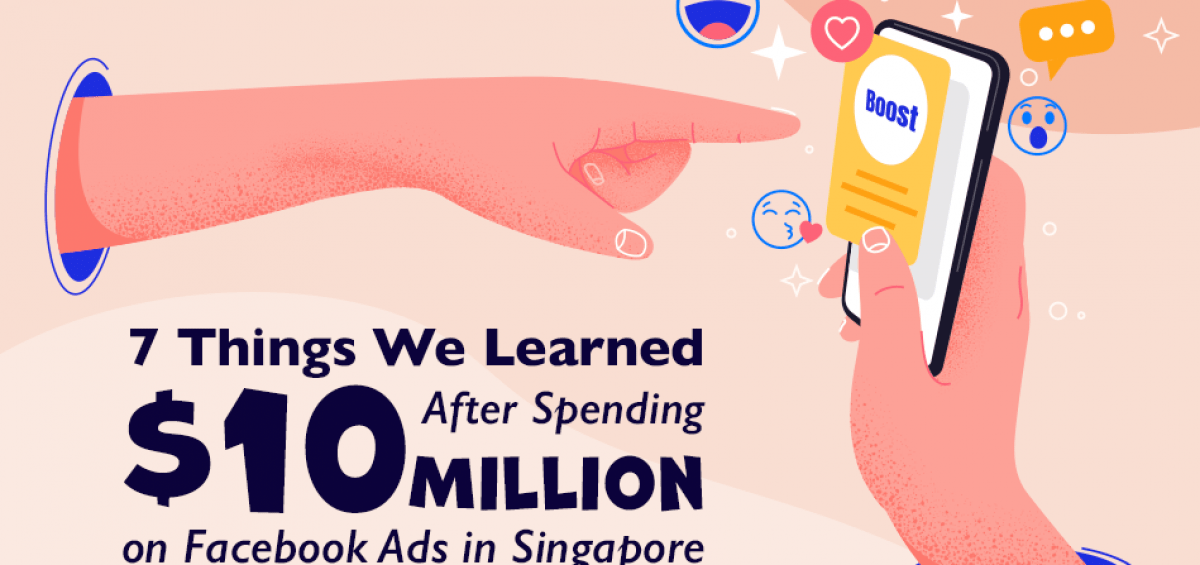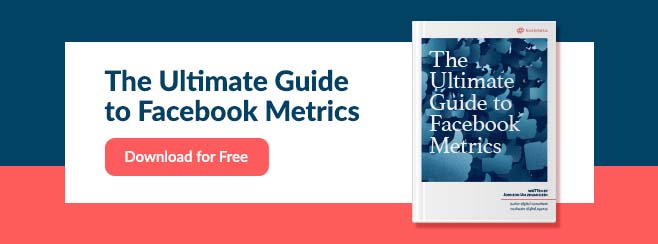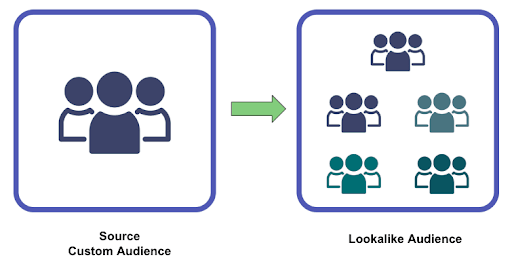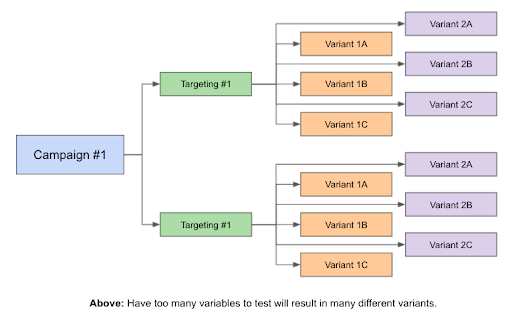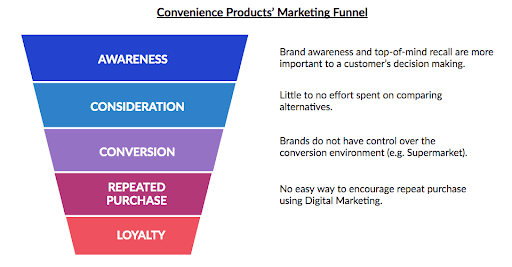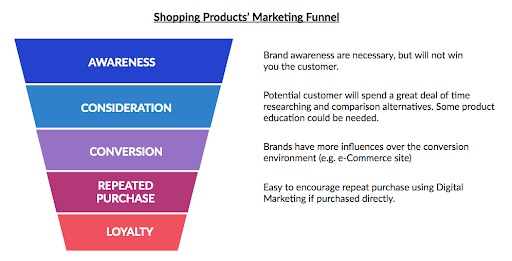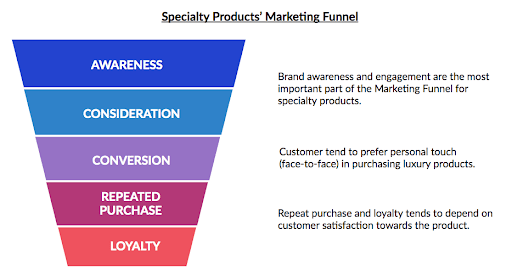One good thing about being a digital marketer in an agency is that you have the unique opportunity to run Facebook ads across a wide range of industries at a volume that is not possible in-house.
Over the past 5 years, Hashmeta has had the privilege to spend well over $10,000,000 in Facebook Ads for our clients. In this article, we hope to shed some light on the intricacies of running Facebook Ads in Singapore by sharing with you some of our observations over the years.
Be Careful with Ad Placements


One common misconception about Facebook Ads is that your ads only appear on Facebook. This cannot be further from the truth. Facebook owns Instagram, and Facebook Ads is the designated ad platform for running ads on both social media platforms. As seen above, there are multiple ad placements for Facebook and Instagram, each with their own creative best practices.
For example, here is how a Static Link Ad would look like on the FB News Feed vs. how it would look like as an IG Story. The creative asset is poorly optimised for IG Stories and is unlikely to be effective at driving results.
Other than Facebook and Instagram, Facebook Ads also collaborate with Apps (aka Audience Network) and other media publishers (a.k.a. In-Article) to place ads on their respective platforms. While this allows advertisers to reach their audience outside of Facebook/Instagram, these placements are also more prone to “fat-finger” clicks and ad fraud.
In summary, you need to keep your creative assets in mind when deciding on the ad placement, and where necessary, create different creative assets for different placements to achieve optimal results. For a full list of social media ad formats, check out “A Marketer’s Handbook to Social Media Formats & Specifications” here.
Beware of the Learning Phase
Every time you create a new adset, or make a significant edit to an existing adset, the adset will enter a “learning phase”. In a nutshell, Facebook’s algorithm needs some time to test and understand the people who are more likely to “convert”. Facebook has also stated that the performance of the adset during the learning phase tends to be poor, hence it is important for advertisers to exit the learning phase as soon as possible.
Some tips to exit the learning phase quicker:
- Optimise for more common conversion events – Ad sets typically exit the learning phase after they receive around 50 optimisation events within a 7-day period. But to expect 50 bottom-funnel conversion events (e.g. purchases) in 7 days can be quite difficult. Hence, you may want to consider optimising for more common conversion events (e.g. “add to cart” instead of “purchase”).
- Allocate at least 20% of your total campaign budget to the learning phase – Have an understanding that your ad sets are unlikely to perform well from the get-go due to the learning phase.
- Do not have too many ad sets and ad combinations – This will “spread out” your budget across too many ad sets and none of your ad sets will be able to exit the learning phase.
- Do not make significant edits after the ad set has started running – Doing so will reset the learning process, resulting in poor results due to the ad set never being able to exit the learning phase.
Align Your Ad Objective to Marketing Goals
While counter-intuitive, it is not always wise to optimise your ads for the “Sales” objective. Your customers may have a long buying cycle and are unlikely to make a purchase the very first time they see your ads. An unhealthy obsession over Return-on-Ad-Spend (ROAS) will jeopardise your digital marketing efforts in the long term.
As shown above, it is wise to visualise your conversion funnel and run different campaigns to move your audience from top to bottom. For example, you can have a Campaign focused on Awareness & Consideration that optimises for “Product View”, followed by another Campaign that focuses on Conversion that optimises for “Add to Cart” or “Purchase” that remarkets to people who have viewed your products before, and so on.
For businesses that have a much longer buying cycle (especially B2B businesses), it is wise to adopt an Inbound Marketing approach. In a nutshell, Inbound Marketing is a marketing approach that seeks to capture the audience’s attention with valuable content. In these cases, your primary objective could be to drive Offer downloads (e.g. e-books, calculators, templates, etc). Read more about Inbound Marketing here.
You Can Spend Too Much
Let’s say that for the month of June, you achieve a total of 100 leads at $20 per lead (with an ad spend of $2,000). It is a common mistake to assume that you will be able to achieve 1,000 leads if you spend $20,000 in the following month, maintaining the Cost Per Conversion at $20. The law of diminishing returns applies to any digital ad buy campaign as well.
As a general rule of thumb, increasing your Daily Ad Spend will almost certainly increase your Cost Per Conversion as well. This is because Facebook will be forced to show your ads to users who are less likely to convert to hit your daily ad spend amount. This can have a negative impact on ad efficiency.
A more ideal approach would be to monitor your ads’ performance at varying levels of ad spend. As seen in the example above, spending more is likely to lead to higher Cost per Conversion. From there, you can decide how best to pace your ad spend to maintain a Cost Per Conversion that you are comfortable with.
Make Use of Custom & Lookalike Audiences
Instead of simply reaching out to complete strangers, it is wise to incorporate Custom and Lookalike Audiences into your overall strategy. In general, Facebook allows 3 broad types of Custom Audiences:
- Website/App Visitors – Includes people who visited your website/app, or more specifically, performed certain actions on your website/app.
- Customer List – Facebook allows you to upload your customers’ details (e.g. email addresses) to match with the details of Facebook/Instagram users in order to create a Custom Audience. Most Customer Relationship Management (CRM) software (e.g. HubSpot, Klaviyo) have built-in features that integrate seamlessly with Facebook. Read more about the 7 Reasons to Implement a CRM System for Your Business.
- Engagement – Includes people who have engaged with your Facebook/Instagram content (e.g. viewing a video, clicking on a post, etc).
Above is a simplified example of how you can make use of the Custom Audience function in your campaign to drive your target audience down the marketing funnel towards conversion.
Based on sophisticated modelling, Lookalike Audiences identify people who share similar likes, interests or characteristics with the people you know (Custom Audience). A good use-case would be to build a Lookalike Audience of your most valuable customers.
Lookalike audiences that are built from a dynamic source (i.e. a conversion event, pageview, etc.) will be constantly updated along with their Custom Audience source. They’re always becoming more accurate as the source audience updates. This makes them far more desirable than a lookalike audience generated from a static source, as static sources can become outdated.
Plan Your A/B Test In Advance
A/B testing refers to a technique that digital marketers use to identify the best combination of ad creative, copy, targeting and other “variables” for their media buy campaign. While A/B testing is considered a best practice, there are certain pitfalls that marketers can easily fall into.
- Having Too Many Variants – The main problem with testing too many variants is that it will spread out your testing budget too thinly. Recall that ad performances only stabilise after an ad has completed the learning phase. Having too many variants but too little budget will result in the adset never being able to exit the learning phase.
- Doing A/B Testing for Short Campaigns – The problem with doing A/B testing for campaigns that only last a short period of time (e.g. <1 month) is that by the time you get conclusive results, the campaign would have ended.
- Using Different Audience Targetings – When testing different variants of creative assets, using different audience targeting may affect the results. It is a best practice to test 1 variable at a time.
The Nature of Your Product/Service Matters
Not all products/services are alike, hence it is important to note that different types of products may require different marketing strategies. Fortunately, we are able to broadly classify products into 4 categories and see their impact on the Marketing Funnel:
Category #1: Convenience Products
A convenience product is defined as “a consumer product or service that customers normally buy frequently, immediately and without great comparison or buying effort.” Some examples would be toilet paper, detergent, drinks, etc. Some characteristics:
- Inexpensive
- Purchased frequently
- Little differentiation between alternatives
- Generally sold indirectly via retailers like supermarkets
Looking at the Marketing Funnel for a Convenience Product, we can see that a majority of your digital marketing efforts should be focused on Brand Awareness and Engagement.
Category #2: Shopping Products
Shopping products are defined as “a consumer product that the customer usually compares based on attributes such as quality, price and style in the process of selecting and purchasing.” Some examples are furniture, electronics devices and clothing. Some characteristics:
- Moderate cost
- Brought infrequently
- Significant differentiation between alternatives (e.g. iPhone vs Huawei)
- Can be sold directly by the brand/manufacturer or indirectly via retailers
Looking at the Marketing Funnel for a Shopping Product, we can see that a majority of your digital marketing efforts should be focused on Website Traffic (for education) and Sales.
Category #3: Speciality Products
Speciality products are defined as “products and services with unique characteristics or brand identification for which a significant group of consumers are willing to make a special effort to purchase.” Most luxury items are specialty products, such as Lamborghini cars, prized art pieces, and Chanel bags. Some characteristics:
- Very high-ticket purchase
- Emotive and aspirational in nature (not rational)
- Usually only purchased by a narrow segment of people
- Can be sold directly by the brand/manufacturer or indirectly via retailers
The main focus of digital marketing for Speciality Products is on branding and engagement with the target audience. Hence, a majority of your digital marketing efforts should be focused on Awareness, Engagement and Website Traffic (for education).
Category #4: Unsought Products
Unsought products are defined as “ consumer products that a consumer either does not know about, or knows about but does not consider buying under normal conditions.” Some examples of Unsought Products are life insurance policies, retirement plan, in-home smoke detectors, etc.
Some characteristics:
- Cost can vary
- Very infrequent purchase
- Has no inherent demand (unlike food and shelter)
- Usually sold directly by the brand
The most common way of marketing unsought products is through fear-mongering, where brands try to educate their target audience about the consequences of not buying their products (e.g. your dependents being in destitute after your passing should you not have life insurance). Hence, a majority of your digital marketing effort should be focused on Engagement, Website Traffic (for education) and Lead Generation.

